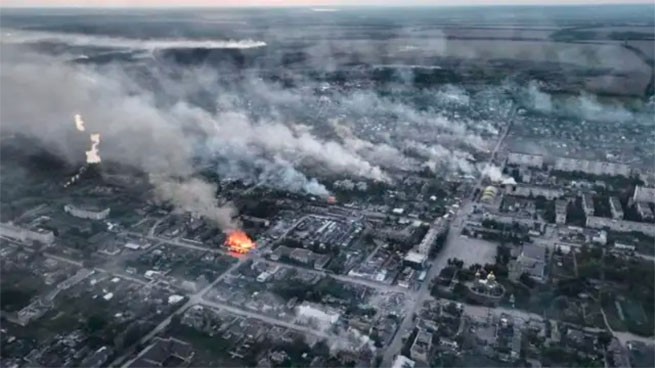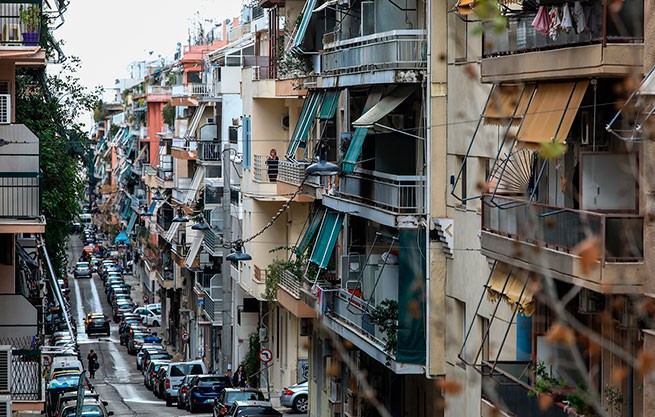The mayor of Rhodes, Antonis Kampourakis, recently proposed to the municipal council a “supervised shooting of deer” as well as a program to neuter the animals, which he claims are now in very high numbers, although there is no research to support this.
The proposal has sparked outrage from environmental organizations, who emphasize that the mayor’s proposal is not based on any scientific evidence, “there will be no sustainable development on the island of Rhodes if he destroys its symbol.”
European doealso known as doe or simply doe (lady lady) lives in several Mediterranean countries, as well as on Rhodes since the Neolithic period and is a symbol of the island. At the entrance to the harbor of the city of Rhodes, on a column stands a statue of a fallow deer, just in the place where it once stood The Colossus of Rhodes.
The Rhodesian population of the European fallow deer is on average smaller than in Central and Northern Europe, although they have similar coloration. In 2005, the Rhodian fallow deer was found to be genetically distinct from all other populations and urgently needed conservation.
“What we need at the moment is not to kill deer, because their numbers are too large, but to take seriously both the protection of the species and the protection of human life and property. And this must be done with appropriate delicacy and the scientific method,” the Rhodes Environmental Association said in a statement.
It should be noted that at the meeting of the council, the mayor of Rhodes presented data indicating that the number of wild animals, i.e. goats, deer and pigs on the island reaches 70,000, which means that the problem has grown and needs to be addressed.
Rhodes Environment Protection Association statement:
Rhodes deer, lady-lady or platoni of Rhodes is one of the eternal symbols of the island. This is the last island in the Mediterranean where these animals have been preserved.
Citing scientific and archaeological evidence, EA of Rhodes notes that platoni first appeared on Rhodes during the Neolithic period, around the sixth century BC. Its population reached significantly higher numbers in the 1920s and 1930s. In the following decades, there is a decrease in their population with the risk of disappearing from the island. In recent years, there seems to be a recovery in the population, the extent of which is not scientifically confirmed.
In the past 35 years, the area of fires in Rhodes has amounted to 483,504 acres, according to data provided by several government organizations, forestry, etc. Naturally, this natural disaster has affected the life and behavior of the deer of Rhodes.
On the other hand, the relationship between Rhodes deer, sheep and goats is competitive in terms of water, food and habitat use. The vital quantity required for the proper conservation of deer is between 35 and 40 acres per animal, according to data that agree with each other. Many of these animals can be seen in residential areas, crops and plantations where livestock grazing prevents natural reforestation. No official body has provisions regarding this situation.
Therefore, if one wants to consider the management of the deer population, other factors must be considered, such as its habitat, welfare, and management of the sheep and goats left unattended. Of course, this should be done with the suggestions of services and experts who deal with these issues always on the basis of a timely management plan.
For several years now there have been complaints (apparently justified) from farmers in northern Rhodes about the damage caused by deer to their crops. At a meeting with the Deputy Minister of Agriculture two months ago, several measures were proposed to address the issue:
- Installation of water tanks, systematic and continuous transportation of feed to areas remote from crops and lowlands to keep deer away from residential areas and crops.
- Funding in collaboration with the Forest Department and the regional government for the construction of 2.20 meter high fences in areas to be specified by farmers to prevent the passage of deer and the parallel configuration of passages on roads where it is observed.
- Road markings in dangerous places to reduce the risk of accidents.
- 100% subsidy for farmers to build electric fences.
- It has been announced that 4-5 open deer parks are being considered, mainly in the south, away from areas of human activity.
So far, none of the above measures have been implemented. “And although we have not yet seen any of the above measures, as long as there are no studies on the approximate population and distribution of the species or, of course, any management plan, the mayor of Rhodes and the chairman of the municipal council drew their own conclusions and made irrational and outrageous proposals to allow hunting deer on the island,” notes a local environmental NGO.
“This is an unacceptable proposal that is not based on any scientific evidence and cannot solve any of the problems that exist due to overgrazing, which mainly affects sheep and goats,” the environmentalists said in a statement.
Εμετός και αηδία για το “ναι” του Δήμου Ρόδου να επιτραπεί το κυνήγι των προστατευομενων ελαφιών της Ρόδου για να ελέγθει ο υπερπληθισμος τους… 150 ελάφια ανά κυνηγό… Δεν θα μείνει ελάφι για δείγμα… Νιώθω ντροπή pic.twitter.com/tAbBJpAzXU
— Ίρις (@me_and_myidk) May 2, 2022
In social networks, the Greeks attacked the mayor of the island with criticism.






More Stories
Anniversary of the Greek tragedy – the 1999 earthquake (video)
Copernicus: Hottest Summer on Record
China braces for super typhoon "Yagi": schools closed, flights cancelled